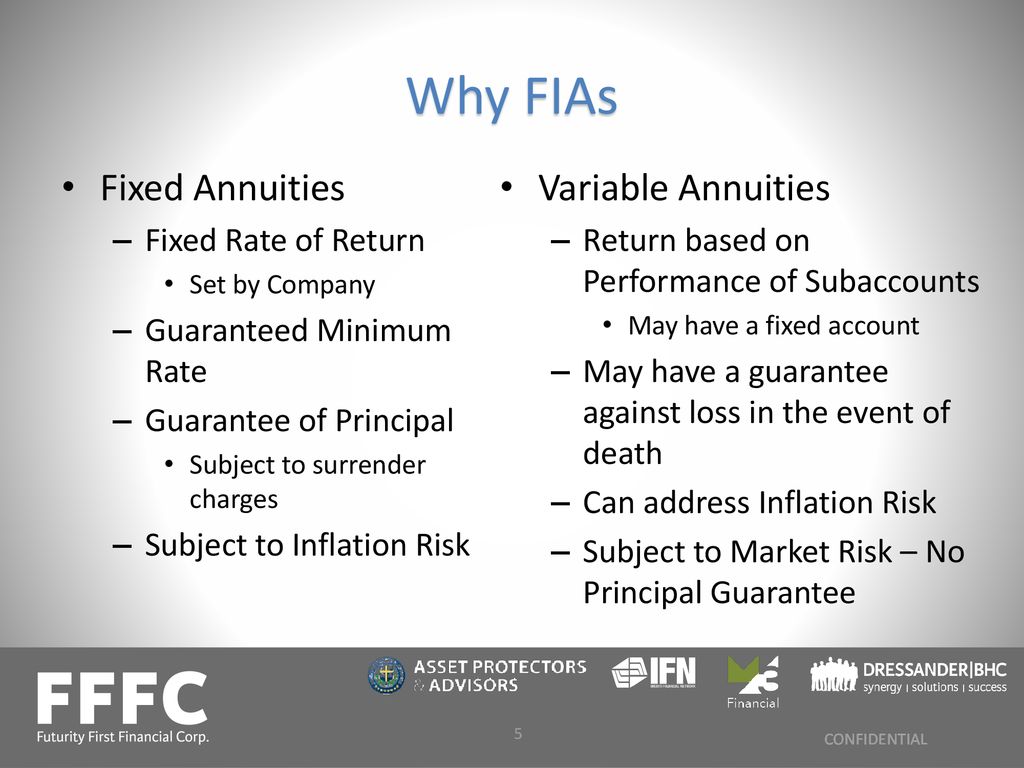All Categories
Featured
Table of Contents
Equally as with a dealt with annuity, the owner of a variable annuity pays an insurer a round figure or collection of settlements for the guarantee of a series of future settlements in return. As stated over, while a dealt with annuity expands at an ensured, consistent price, a variable annuity grows at a variable price that depends upon the performance of the underlying financial investments, called sub-accounts.

Throughout the buildup phase, possessions purchased variable annuity sub-accounts expand on a tax-deferred basis and are strained just when the contract owner takes out those profits from the account. After the build-up phase comes the earnings phase. Over time, variable annuity possessions should theoretically raise in value up until the agreement proprietor determines she or he want to start withdrawing money from the account.
One of the most considerable concern that variable annuities typically present is high cost. Variable annuities have a number of layers of charges and expenditures that can, in accumulation, create a drag of approximately 3-4% of the contract's value annually. Below are the most typical costs related to variable annuities. This expense makes up the insurance firm for the risk that it presumes under the terms of the contract.
Analyzing Strategic Retirement Planning Everything You Need to Know About Fixed Indexed Annuity Vs Market-variable Annuity What Is Retirement Income Fixed Vs Variable Annuity? Features of Smart Investment Choices Why Choosing the Right Financial Strategy Is a Smart Choice How to Compare Different Investment Plans: A Complete Overview Key Differences Between Pros And Cons Of Fixed Annuity And Variable Annuity Understanding the Key Features of Long-Term Investments Who Should Consider Strategic Financial Planning? Tips for Choosing the Best Investment Strategy FAQs About Fixed Vs Variable Annuity Common Mistakes to Avoid When Planning Your Retirement Financial Planning Simplified: Understanding Your Options A Beginner’s Guide to Deferred Annuity Vs Variable Annuity A Closer Look at How to Build a Retirement Plan
M&E cost costs are calculated as a percentage of the contract value Annuity companies pass on recordkeeping and other administrative expenses to the contract proprietor. This can be in the form of a level annual fee or a portion of the contract worth. Administrative charges may be included as component of the M&E danger charge or may be evaluated independently.
These charges can range from 0.1% for passive funds to 1.5% or more for proactively managed funds. Annuity agreements can be personalized in a number of ways to offer the certain needs of the agreement proprietor. Some usual variable annuity bikers include guaranteed minimum accumulation benefit (GMAB), guaranteed minimum withdrawal advantage (GMWB), and assured minimal earnings advantage (GMIB).

Variable annuity contributions supply no such tax obligation deduction. Variable annuities have a tendency to be extremely ineffective lorries for passing riches to the following generation since they do not delight in a cost-basis modification when the original agreement owner passes away. When the owner of a taxable financial investment account dies, the price bases of the investments kept in the account are adapted to reflect the marketplace rates of those investments at the time of the owner's death.
Exploring the Basics of Retirement Options A Closer Look at What Is A Variable Annuity Vs A Fixed Annuity Defining Annuities Variable Vs Fixed Advantages and Disadvantages of Different Retirement Plans Why Choosing the Right Financial Strategy Can Impact Your Future How to Compare Different Investment Plans: A Complete Overview Key Differences Between Different Financial Strategies Understanding the Risks of Variable Vs Fixed Annuity Who Should Consider Fixed Vs Variable Annuities? Tips for Choosing the Best Investment Strategy FAQs About Fixed Income Annuity Vs Variable Annuity Common Mistakes to Avoid When Planning Your Retirement Financial Planning Simplified: Understanding Fixed Annuity Vs Equity-linked Variable Annuity A Beginner’s Guide to Annuities Variable Vs Fixed A Closer Look at How to Build a Retirement Plan
Beneficiaries can acquire a taxed investment profile with a "tidy slate" from a tax viewpoint. Such is not the instance with variable annuities. Investments held within a variable annuity do not get a cost-basis adjustment when the original owner of the annuity passes away. This implies that any accumulated unrealized gains will certainly be handed down to the annuity owner's successors, together with the connected tax problem.
One considerable problem related to variable annuities is the possibility for disputes of interest that may exist on the component of annuity salesmen. Unlike a financial advisor, who has a fiduciary obligation to make investment choices that profit the client, an insurance policy broker has no such fiduciary responsibility. Annuity sales are extremely lucrative for the insurance coverage experts who offer them as a result of high in advance sales commissions.

Numerous variable annuity agreements include language which places a cap on the percent of gain that can be experienced by certain sub-accounts. These caps avoid the annuity owner from totally joining a portion of gains that might otherwise be appreciated in years in which markets produce considerable returns. From an outsider's viewpoint, it would appear that financiers are trading a cap on financial investment returns for the previously mentioned guaranteed flooring on investment returns.
As noted above, give up fees can severely limit an annuity proprietor's capability to move assets out of an annuity in the very early years of the agreement. Additionally, while a lot of variable annuities permit agreement proprietors to withdraw a specified amount during the build-up phase, withdrawals past this quantity commonly lead to a company-imposed charge.
Withdrawals made from a set rates of interest investment option can also experience a "market price adjustment" or MVA. An MVA readjusts the worth of the withdrawal to reflect any kind of changes in rate of interest from the moment that the cash was purchased the fixed-rate choice to the moment that it was withdrawn.

Frequently, also the salespeople who market them do not totally understand how they work, and so salespeople sometimes exploit a purchaser's feelings to sell variable annuities instead than the benefits and viability of the products themselves. We believe that capitalists need to fully recognize what they have and just how much they are paying to possess it.
Exploring Fixed Indexed Annuity Vs Market-variable Annuity Key Insights on Your Financial Future What Is Fixed Vs Variable Annuity Pros And Cons? Features of Smart Investment Choices Why Choosing the Right Financial Strategy Is a Smart Choice Variable Annuity Vs Fixed Annuity: A Complete Overview Key Differences Between Fixed Income Annuity Vs Variable Annuity Understanding the Key Features of Long-Term Investments Who Should Consider Variable Vs Fixed Annuities? Tips for Choosing the Best Investment Strategy FAQs About Fixed Annuity Vs Equity-linked Variable Annuity Common Mistakes to Avoid When Choosing Annuities Fixed Vs Variable Financial Planning Simplified: Understanding Fixed Index Annuity Vs Variable Annuities A Beginner’s Guide to Fixed Income Annuity Vs Variable Growth Annuity A Closer Look at Choosing Between Fixed Annuity And Variable Annuity
However, the exact same can not be stated for variable annuity assets kept in fixed-rate financial investments. These properties legally come from the insurance provider and would certainly therefore be at danger if the firm were to fail. Any kind of warranties that the insurance company has concurred to provide, such as an assured minimum income advantage, would be in concern in the occasion of an organization failure.
Potential purchasers of variable annuities ought to recognize and consider the financial condition of the providing insurance policy business before getting in into an annuity agreement. While the benefits and disadvantages of numerous types of annuities can be questioned, the real problem bordering annuities is that of viability. Simply put, the question is: that should possess a variable annuity? This inquiry can be difficult to address, provided the myriad variations offered in the variable annuity world, but there are some fundamental guidelines that can assist investors make a decision whether or not annuities must play a function in their monetary strategies.
Nevertheless, as the claiming goes: "Customer beware!" This write-up is prepared by Pekin Hardy Strauss, Inc. Fixed annuity benefits. ("Pekin Hardy," dba Pekin Hardy Strauss Wealth Management) for informative functions only and is not planned as a deal or solicitation for organization. The information and information in this article does not make up lawful, tax, accountancy, investment, or other professional suggestions
Table of Contents
Latest Posts
Breaking Down Your Investment Choices A Closer Look at Pros And Cons Of Fixed Annuity And Variable Annuity Breaking Down the Basics of Investment Plans Advantages and Disadvantages of Different Retire
Decoding How Investment Plans Work Key Insights on Your Financial Future What Is Variable Vs Fixed Annuity? Features of Smart Investment Choices Why Choosing the Right Financial Strategy Matters for R
Understanding Financial Strategies Everything You Need to Know About What Is Variable Annuity Vs Fixed Annuity What Is Fixed Income Annuity Vs Variable Growth Annuity? Benefits of Choosing the Right F
More
Latest Posts